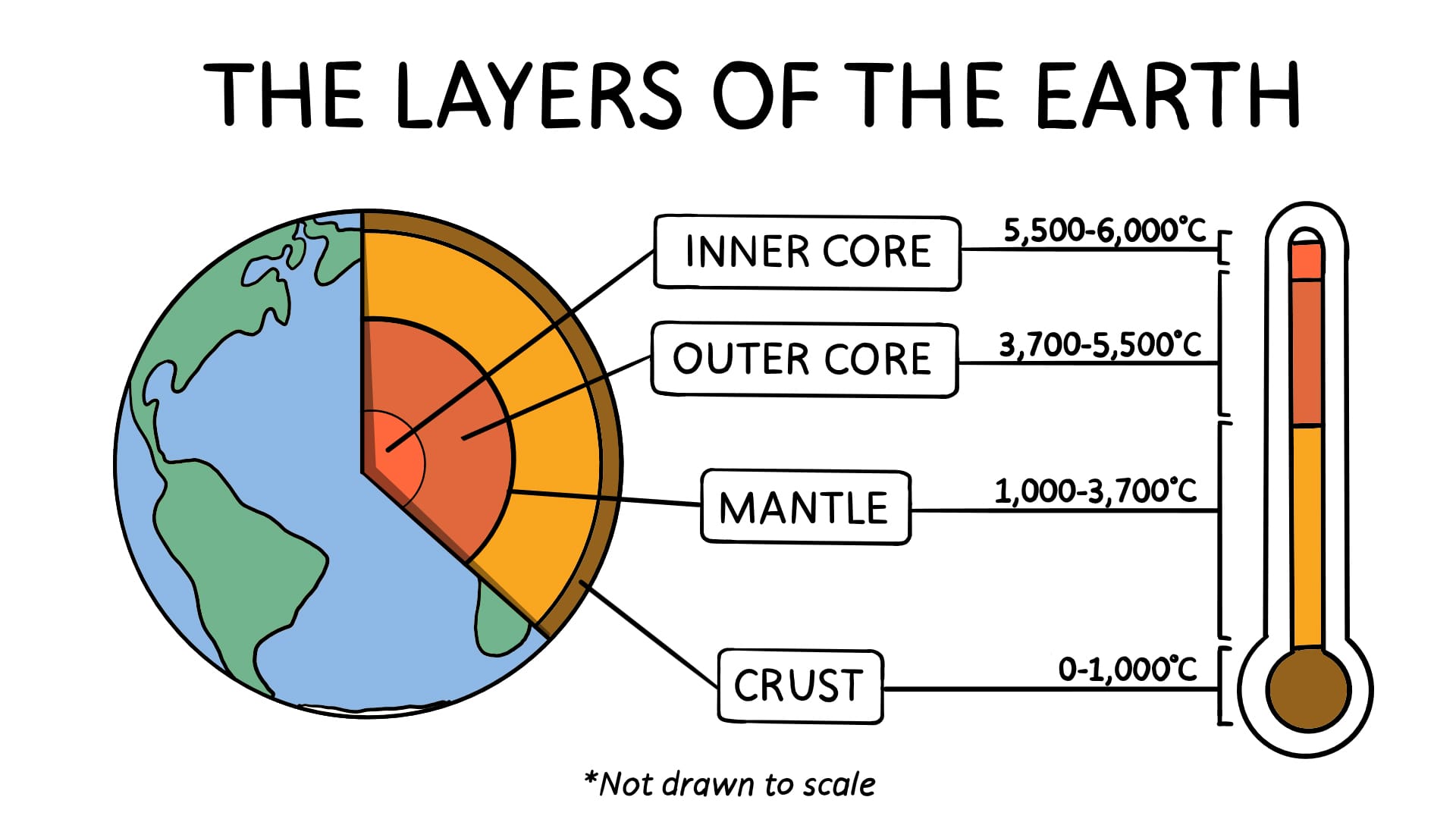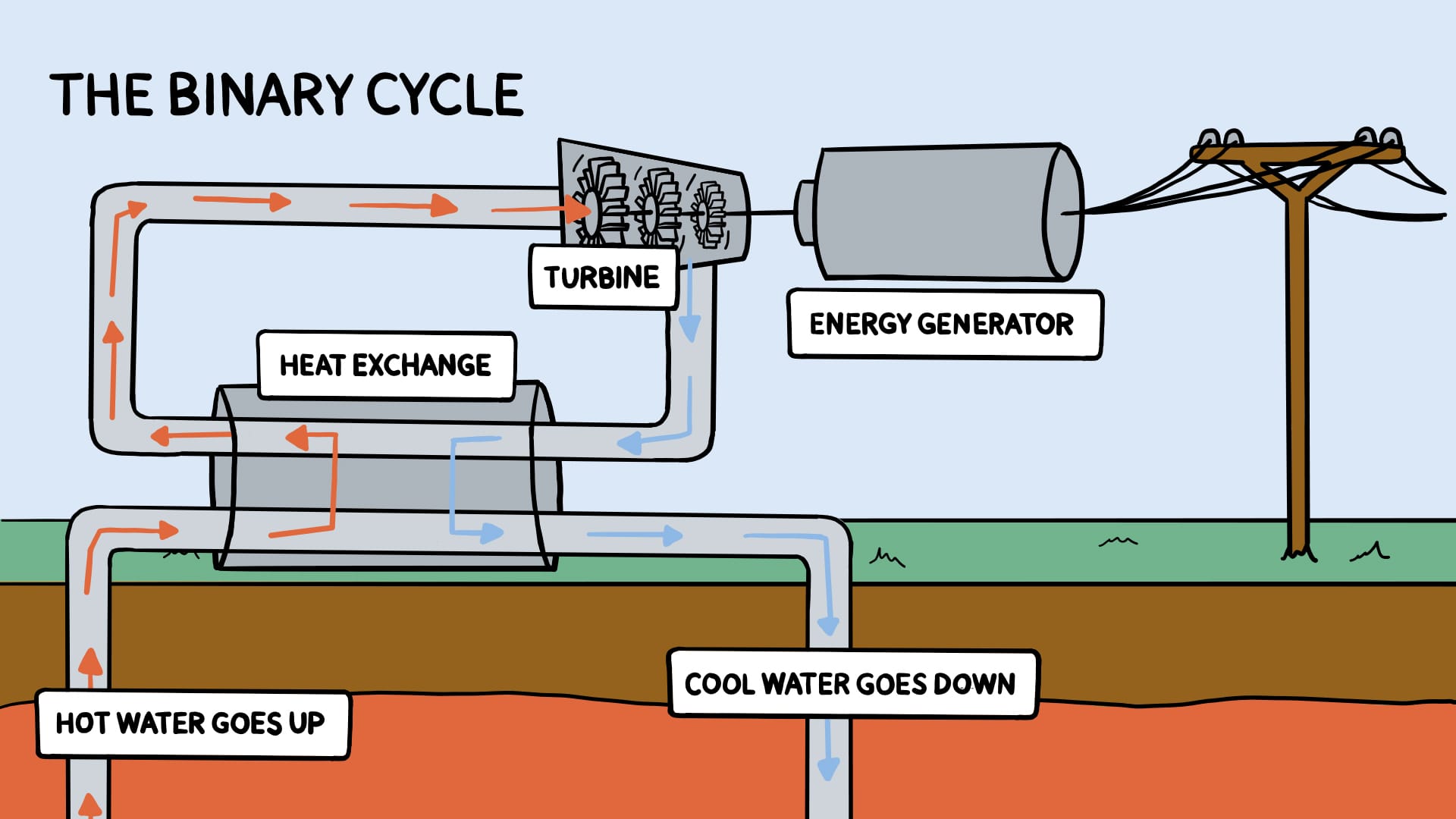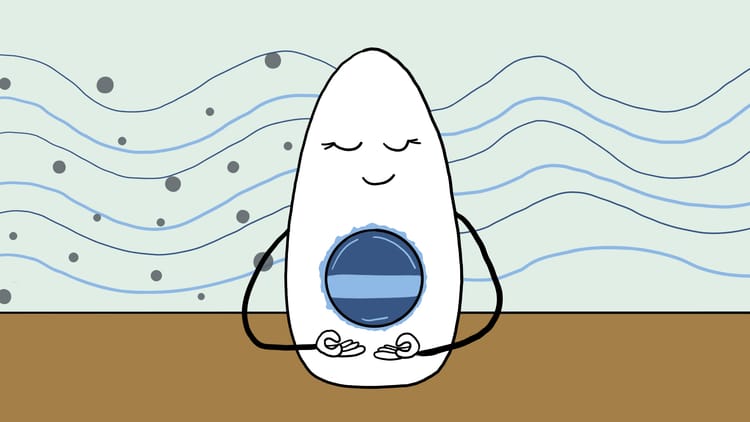Geothermal energy: the heat beneath our feet

In case you missed, read part 1 of this series here.
In Jules Verne’s classic 1864 novel, Journey to the Center of the Earth, a goofy German scientist, his reluctant nephew, and their Icelandic tour guide repel down a dormant volcano into the nethermost regions of the Earth. There they encounter living dinosaurs, underground oceans, and subpolar tornados.
The book, I’m afraid to say, is not very realistic. Verne conveniently fails to address a pair of inconvenient truths about plumbing the Earth’s depths:
- It gets really fuckin’ hot down there
- The pressurized environment deep underground would crush a human body like an empty can of Bud Lite against Pete Hegseth's forehead
The further you descend, the hotter and more pressurized it gets.
You wouldn't know it if your only exposure to the underworld is sipping Chablis in a wine cave or retrieving the leaf blower from a musty old basement. But if you go further down—another 1,000 feet, say—the temperature starts to rise in a hurry.
There's something called the ‘geothermal gradient’, which is the rate that temperature increases with depth. The average rate of increase is about 1.5°F per 100 feet of depth (or 25°C per kilometer, for the metric crowd), though this changes dramatically depending on where in the world you’re descending.
If you kept going down (and going, and going), eventually you’d reach the Earth’s innermost core—a solid ball of metal 3/4ths the size of the moon that’s as hot as the sun itself.
Pressure operates on a gradient, too. The deeper you go, the more rock and ocean there is on top of you, pushing down on everything below. Pressure increases at a rate of roughly 1,500–4,500 PSI per kilometer. For context, the recommended pressure for most car tires is 28–36 PSI. At a depth of half a mile, the pressure can be strong enough to collapse your lungs.
Due to the gravitational pull of the Earth's super-dense inner core, pressure comes from all sides, squishing the planet like a stress ball.
Intense pressure can do some strange things. It can fuse cracked rocks back together again. It can turn CO2 from a gas to a liquid. Pressure can raise the boiling point of water to over 700°F (373°C).
When that superheated water rises up to the surface, the sudden decrease in pressure causes it to flash into steam powerful enough to drive turbines and generate electricity.
That's how geothermal energy has traditionally worked. For millennia, humans have taken advantage of the special places in the world where naturally occurring steam can be harnessed for heat and power.
Those places are special for a reason: they’re quite rare. In 2023, geothermal accounted for just 0.4% of the energy production in the U.S.
But that’s about to change.
In this series, we’ll explore why the center of the Earth is a giant ball of hot metal, how humans have taken advantage of the Earth’s heat since our earliest days, the fascist Italian Prince who made an enormous discovery, and the remarkable new companies competing to make something called Enhanced Geothermal Systems the next big thing in clean, firm energy.
Lasers! Diamond-tipped drill bits! Horizontal drilling! Fiber optic sensing!
Turn on your headlamps, folks, ‘cause we’re going down the borehole.
How the Earth was formed (abridged version)
1. The giant singles mixer in space
Back in the day (call it 4.54 billion years ago), a cloud of dust and gas got together at a giant singles mixer/happy hour in space. Particles met, chatted, collided, and went home together. Some of them settled down and formed tiny planets called planetesimals. These tiny planets grew up (by continually colliding with more stuff) until they got dense enough to exert their own gravitational forces, which they used to smash into even more dust and gas and tiny planets. They kept growing until they became planet-sized shapes, which we call ‘protoplanets’. Our Earth was once such a protoplanet.
As proto-Earth grew, its own burgeoning gravitational field caused its densest ingredients, like iron, nickel, and uranium, to sink down to its center. These metals became the Earth’s inner core, a solid ball of ferociously hot iron-nickel alloy. Surrounding the inner core is a 1,400 mile-thick ring of piping hot liquid metal, known as the outer core.
The Earth’s not-quite-as-dense elements floated down, but not all the way to the center. These included other radioactive elements like thorium and potassium. Meanwhile, the least dense elements rose to the top to form the Earth’s mantle and crust.

2. Why the Earth’s core is so hot
All those planetesimals smashing into each other generated lots of heat (it must have been a memorable happy hour!).
However, scientists think only 20% of the core’s heat today is derived from those original gas and dust particle collisions. The rest is produced by radioactive elements like uranium, thorium, and potassium buried deep within the Earth that continuously generate heat as they decay.
3. Why the Earth’s surface is (relatively) cool
Eventually, the space-facing parts of the Earth cooled off. The crust hardened into a series of large slabs, called tectonic plates. About 22 miles below the Earth’s surface, the mantle mostly hardened, too.
The Earth’s mantle is made up of mineral-dense rock. The mantle is thick—1,800 miles thick. It accounts for 84% of the planet’s total volume. Unlike metal, rock is a poor conductor of heat, so the mantle functions as an excellent insulator, keeping heat mostly trapped in the core of the planet.
But containing a moon-sized ball of molten metal is a tall order.
Some of that heat inevitably escapes, radiating outwards. And rocks can hold some heat. So that's how we get our geothermal gradient: as depth increases, the insulation steadily gives way to hotter and hotter rocks.
There are places where heat from the Earth’s core makes an appearance on the surface of our world. Volcanoes are formed when the crust’s tectonic plates slip and slide on top of the mantle: when the plates pull away from each other, they can create pathways for underground magma to bubble up to the surface.
Maybe you’ve seen Old Faithful spouting off at Yellowstone. Geysers are formed when underground water, heated by magma, works its way up to the surface through natural cracks, fissures, and cavities. As previously mentioned, when superheated water suddenly experiences a decrease in pressure, it turns into steam almost instantly.
Humans are clever animals, and we’ve been putting these geothermal hotspots to good use since our earliest days.
The dawn of geothermal energy (beginning to 2023)
1. In the beginning
Humans have enjoyed geothermal heat since our earliest days. Hot springs were relaxing even back in the Paleolithic times. Just a few million years later, the Romans figured out how to channel the hot springs they “found” in Bath, England into public baths and underfloor heating. The schvitz was born.
Fast-forward to 1904, when a Tuscan prince made a major discovery. Prince Piero Ginori Conti of Trevignano found he could convert the steam from a volcanic spring-fed field into electricity by feeding that steam into a generator. The Prince’s crappy generator was only powerful enough to light five light bulbs, but it was a start. A few years later, the world's first commercial geothermal power plant was built right there, in Larderello, Italy, a place known as the Devil’s Valley.
(Prince Conti’s business would go on to flourish in large part due to his enthusiastic support of Benito Mussolini. Just in case you were thinking of naming a pet after the guy.)
2. The binary cycle
The next big innovation in geothermal energy occurred not too far away from Larderello on the volcanic island of Ischia, Italy, in the early 1940s. That’s where the earliest example of what’s known as a ‘binary cycle’ geothermal power plant is thought to have been built.
Until Ischia, geothermal power relied on naturally occurring steam flashing out of the ground. This worked well when the steam showed up, but it was inconsistent. So someone, their name lost to time, devised a new method to consistently tap into the heat they knew was lurking just below the surface of the steam fields. It was a clever design they came up with, and a version of it is still used today.

The 'binary cycle' method works like this: you drill into hot rock where underground water is naturally superheated. This hot water—often full of nasty dissolved minerals and chemicals—gets pumped up to the surface. Instead of running it through a turbine directly (which would corrode the equipment), it goes into a machine called a 'heat exchanger'. There, the heat is transferred to a second fluid with a low boiling point—often isobutane or pentane. This second fluid heats up, turns into vapor, and spins a turbine to generate electricity. Afterward, both fluids are cooled and sent back underground to get warmed up again by traveling through cracks and fissures in the hot rock until they're ready to rise back up to the surface... at which point you stick them back in the heat exchanger. Rinse and repeat!
3. Snatching up all the best spots
After Ischia, the next big industrial geothermal plant was built in New Zealand in 1958, where it continues to operate today.
In 1960, an 11 megawatt geo field opened north of San Francisco. Known as The Geysers, it contains a complex of 18 geothermal power plants that draw steam from more than 350 manmade wells. It’s the largest geo field on the planet and it, too, is still in operation today.
Iceland’s unique geology makes it especially well-suited for capitalizing on geothermal energy. The small country straddles a rift where two continental plates diverge. There, Iceland sits atop a volcanic hotspot with nine active volcanoes heating vast underground water reservoirs up to hundreds of degrees Fahrenheit.
Semi-related: I visited Iceland for a couple days once (stopover style) and had an amazing experience at one of their ancient geothermal spas. Not the Blue Lagoon, because I didn’t realize I was supposed to book a ticket in advance.
Geothermal energy in Iceland didn't really get going until the energy crisis of the 1970s, but since then Icelanders have put their volcanic geology to good use: as of 2002, Iceland has a geothermal power capacity of 799 megawatts, with 90% of all homes in the country heated with geothermal energy.
In another part of the world, the Philippines have also taken advantage of their abundant geo potential, the result of the islands' 24 active volcanoes. The Philippines is now second only to the U.S. in geothermal growth rate, with a plan to power 70% of their energy needs with geo by 2030.
These days, the world’s most convenient geothermal hotspots—the steaming springs and aquifers where you can plop down a power plant, dig a couple wells, and let 'er run on abundant heat from shallow depths forever—have all been claimed.
But we know that no matter where we are on the planet, if we go down deep enough, things start to heat up. So if we could just get deep enough into the bedrock, couldn't we theoretically run a binary cycle... anywhere?
4. Geothermal anywhere
Inventive folks have been thinking up ways to get further down into the bedrock for a long time.
They've tried explosives, chemicals, hydraulic pressure, and big old drills to break up rocks. But rocks are hard, the pressure is crushing, and drilling is very expensive. In all of human history, nobody ever managed to do it in a way that made economic sense, outside of those rare places where geysers blow and steam wafts up all on its own.
That is, until 2023.
Read part 2 in this series: Enhanced geothermal: deeper, faster, more... sideways?
Special thanks to Kim Vinet for her help with this post!





Member discussion